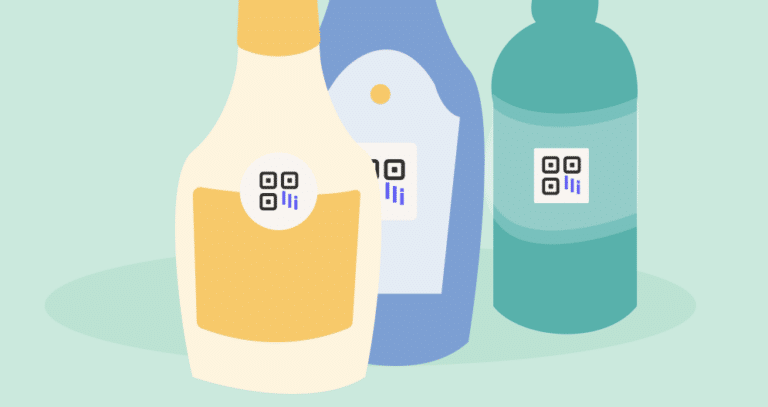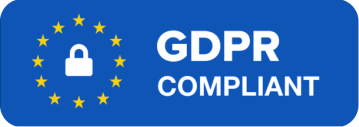The dawning of a new standard
The wine industry is at a turning point. With EU Regulation 2021/2117 on the horizon, wine producers across Europe are rethinking what a wine label can—and should—do. This new regulation doesn’t just tighten compliance requirements for wine bottles and other alcoholic beverages. It also opens the door to smarter, more interactive labeling systems.
Enter dynamic QR codes.
Far from being just a functional add-on, QR code wine labels are becoming a strategic asset for forward-thinking wine brands. They offer a powerful way to meet regulatory demands while deepening the connection between wineries and consumers.
In this article, we’ll explore why QR codes for wine labels aren’t just a trend—they’re a turning point. You’ll discover how they empower wine producers to create user-friendly, data-rich labels that do more than sit on the bottle—they speak directly to the person scanning them.
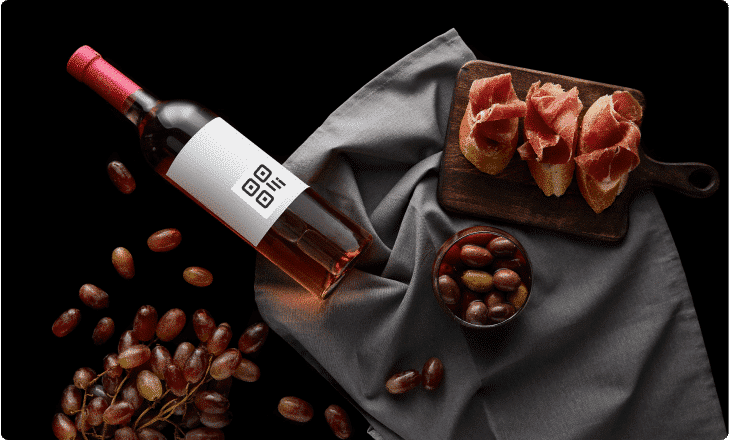
Understanding EU regulation 2021/2117
EU Regulation 2021/2117, in force since December 8, 2023, marks a major shift in how wine bottles and other alcoholic beverages must be labeled. It mandates detailed nutritional information and full ingredient lists on wine labels, reflecting the EU’s growing focus on health, safety, and transparency.
For wineries and wine brands, this means rethinking how they present information—staying compliant without sacrificing their brand identity.
The labeling dilemma for winemakers
For wine producers and label designers, the challenge is clear: how do you pack more data onto a wine label—especially the often-cramped back label—without disrupting its visual appeal?
This isn’t just a design hurdle. It’s a strategic puzzle. Wine brands now need smart ways to deliver essential content without crowding the bottle or compromising the elegance that sets them apart. Striking the right balance between function and form has become central to modern label development.
Consumer information: A new frontier
Today’s consumers don’t just buy wines—they research them. They want to know what’s inside the bottle, where it came from, and how it was made. This regulation meets that demand head-on, pushing wineries to embrace a more open and informative approach.
Done right, it’s not just compliance—it’s connection.
With QR codes, each label becomes a digital touchpoint. One quick scan can lead to landing pages with tasting notes, vineyard backgrounds, or stories behind a specific bottle. For wine brands, that’s a powerful opportunity to turn every product into an invitation—to explore, learn, and engage.
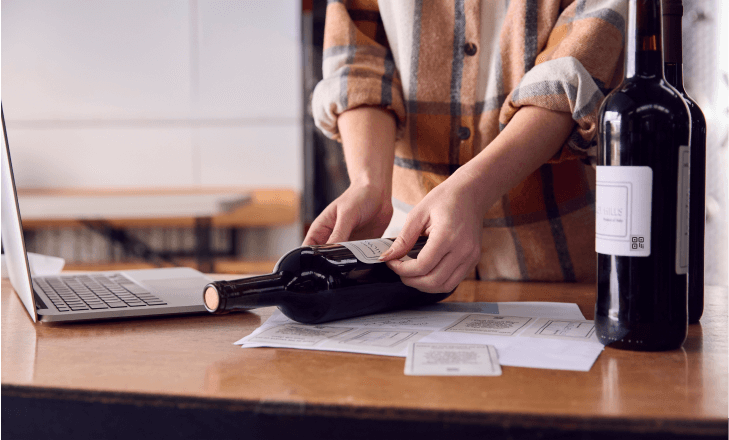
QR codes and wine: An overview
QR codes in the wine industry
In wine production, QR codes have grown far beyond a clever marketing trick. They’ve become a must-have on wine bottles—not just for flair, but for function.
What started as a way to share virtual vineyard tours or tasting notes has matured into something much bigger. Today, QR code wine labels are a core part of how wine brands tell their story, connect with customers, and stand out on the shelf.
With a quick scan, consumers are taken straight to the winery’s website, where the specific bottle in their hand becomes the start of a deeper, more engaging experience.
The evolution of QR technology
It’s not just the wine labels that have changed—QR codes themselves have evolved.
Once dismissed as a temporary gimmick, they’ve proven to be a reliable, flexible tool for everything from regulatory compliance to storytelling. In today’s wine industry, a well-placed QR code can reveal where the wine was made, how it was produced, and what’s inside the bottle—right down to nutritional information.
For both wine producers and consumers, that instant access to rich, trustworthy data is more than helpful. It’s a game-changer.
The rise of digital link QR codes
From QR to digital link
Digital link QR codes are a leap forward in QR technology—especially for wine labels. Unlike traditional codes, they embed a GTIN (a unique product identifier) directly into a URL. The result? One sleek QR code that unlocks a world of functions without cluttering the bottle.
For wine producers, this means a smarter way to communicate: fewer codes, less noise, and more space for the design to shine.
Advantages of digital link in labeling
Digital link QR codes offer a clean, elegant solution to a messy problem: how do you fit more data onto a wine label without turning it into a wall of text?
With these advanced codes, wine brands can keep the look and feel of their label intact while still delivering everything regulators—and consumers—need. That includes nutritional information, regulatory details, and even dynamic content tied to the specific bottle.
It’s more than an upgrade. It’s a smarter system that helps wine brands stay compliant, stand out, and connect more meaningfully with the people who drink their wines.
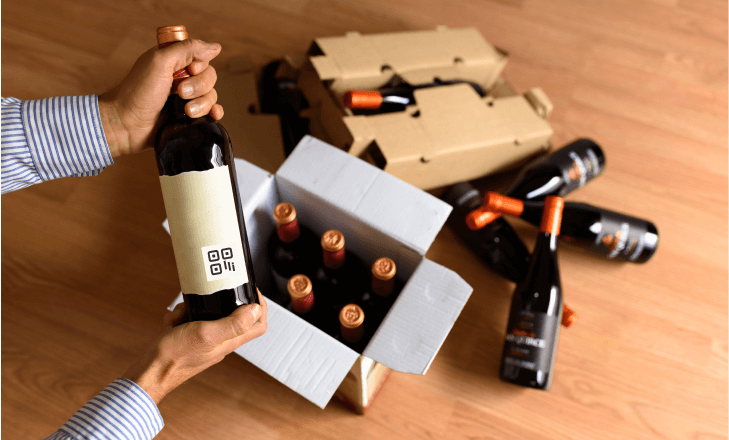
Compliance with EU regulations
With EU Regulation 2021/2117 now in effect, digital link QR codes have quickly proven to be the smartest path to compliance.
They handle the new labeling demands effortlessly, packing everything from nutritional information to ingredient lists into a single, scannable QR code—without overwhelming the wine label.
This isn’t just about checking regulatory boxes. For wine producers, it’s a strategic edge. You meet the rules, keep your labels clean, and deliver essential info in a way that feels intuitive and consumer-friendly. All on one bottle.
QR Code KIT: Leading the way for wine labeling with Digital Link
Your gateway to advanced labeling solutions
At QR Code KIT, we understand what’s at stake with the new EU wine labeling rules. As the industry adapts, we’re here to make sure wine producers stay ahead—with tools built not just for compliance, but for connection.
We champion Digital Link QR codes as the future of smart, scalable wine label solutions.
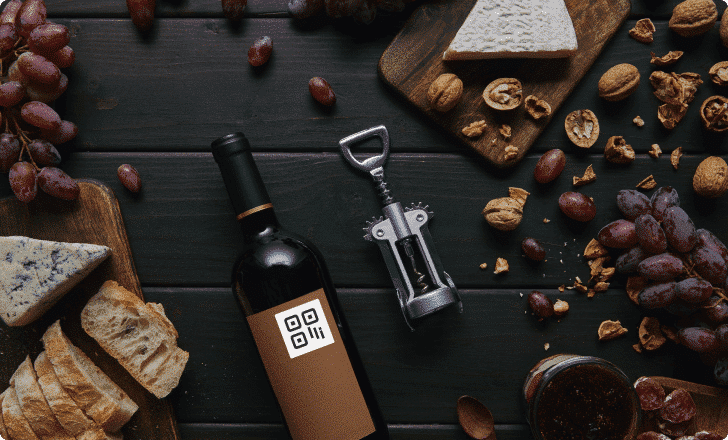
Why QR Code KIT endorses Digital Link for wine labels
At QR Code KIT, we’re not just in the business of generating QR codes—we’re helping shape the next generation of wine labeling. That’s why we back Digital Link: it’s flexible, powerful, and tailor-made for the demands of EU Regulation 2021/2117.
These next-gen codes do more than tick compliance boxes. They create a smoother experience for consumers, keep labels clean, and offer brands a better way to tell their story.
All it takes is entering a product ID. In seconds, you’ll get a dynamic QR code, a multi-use URL, and a customizable Smart page—fully mobile-ready and packed with all the legally required info. Simple for you, seamless for your customers.
Practical applications
Enhancing consumer engagement
QR codes are changing the way wineries connect with people—not just by sharing information, but by creating experiences.
With a quick scan on a mobile device, consumers can dive into the story behind a specific bottle—how it was made, where it comes from, and even who made it. This kind of transparency builds trust and makes every interaction with the brand feel more personal.
And it doesn’t stop there. A QR code can take users to the winery’s website, social channels, landing pages, or even a loyalty program. It’s a direct path from the bottle in their hand to the heart of the brand—and, in many cases, to the site where they can place an order or sign up for more.
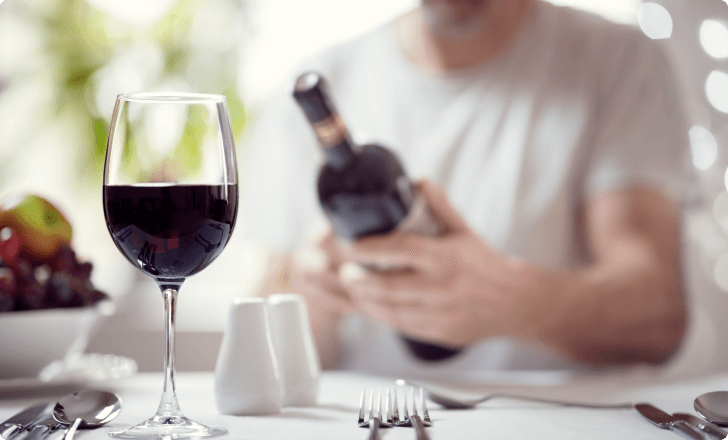
Label design and aesthetics
Blending QR codes into wine labels isn’t just about functionality—it’s a design challenge, too. For label designers, the key is making sure the code works and looks good.
A well-placed QR code should feel like part of the label, not an afterthought. Using a light background improves visibility and ensures the code scans easily, while careful design helps it complement the overall look of the bottle.
Done right, it’s not just a tech feature—it becomes part of the wine’s identity.
Technical aspects
Creating effective QR codes
Building great QR codes for wine labels isn’t just about linking to info—it’s about making that link work effortlessly.
Size, contrast, and placement on the label all matter. If a QR code is too small, hard to spot, or awkwardly positioned, it risks going unused. It has to be instantly scannable—and visually integrated into the wine bottle design.
Just as important? Where it leads. The landing page should be fast, mobile-friendly, and rich with useful content—think origin, production details, or even food pairings.
Data and analytics
Every scan tells a story. Beyond customer interaction, QR codes give wine brands a valuable feedback loop.
They reveal when, where, and how often codes are scanned—data that can shape smarter marketing, better product development, and deeper consumer engagement.
With the right analytics, wineries can tailor every campaign to fit what their customers actually want.

Security and reliability
Trust starts with the scan.
QR codes often carry critical data—nutritional information, allergen alerts, and more. That info has to be accurate, secure, and always up to date.
Reliable codes protect both the brand and the consumer, reinforcing credibility while meeting the demands of regulation.
Digital links: The future of labeling
Beyond compliance
Digital link QR codes go far beyond checking regulatory boxes. They’re changing what wine labels can do.
These smart codes give wine brands a new way to connect—offering rich, interactive content that deepens the consumer experience. Imagine scanning a QR code and hearing directly from the winemaker about the wine in your hand. That kind of personal touch builds real loyalty.

Global trends and adoption
This isn’t just a European shift—it’s happening worldwide.
Across major wine-producing countries, industries are turning to digital link QR codes to boost transparency, engage consumers, and future-proof their labels.
As the technology spreads, one thing is clear: QR codes aren’t a passing trend. They’re quickly becoming the global standard for smarter, more connected product labeling.
Transitioning to new label standards
Adapting to EU Regulation 2021/2117 isn’t just a box-ticking exercise—it’s a strategic move that calls for careful planning.
This shift gives wine brands a chance to rethink how they communicate on the label—and beyond.
The key? Seamlessly integrating QR codes into your current wine label designs so they stay beautiful, functional, and fully compliant. And choosing a reliable platform like Digital Link to generate and manage those codes makes the whole process smoother—for you and your consumers.
Looking ahead: The future of wine labeling
The future of wine labeling is clearly digital—and we’re only scratching the surface.
QR codes and digital link technology are transforming wine labels from static tags into interactive touchpoints, giving consumers more than a name or logo—they offer an experience.
What’s next? Think augmented reality, personalized content, even recommendations tailored to your taste. As the wine industry leans further into tech, the label won’t just represent the brand—it’ll be the brand’s connection to its audience.
The bottle in your hand is becoming a story, a service, and a conversation—scannable, smart, and always evolving.
Conclusion: Embracing innovation
As regulations shift and consumer expectations grow, the wine industry’s move toward QR codes for wine labels shows more than just compliance—it signals a clear commitment to innovation.
By embracing tools like digital link QR codes, wine brands aren’t just keeping up. They’re stepping ahead—ready for what’s next.
What began as a novel idea has become both a regulatory necessity and a powerful branding tool. And that evolution speaks volumes about the industry’s adaptability, resilience, and drive to stay relevant in a fast-changing marketplace.
